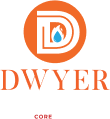Have you ever wondered where hidden water damage might be lurking in your home?
When homeowners think of water damage, they often imagine scenarios like burst pipes or flooding. However, water damage can originate from many less obvious sources that can go unnoticed for years, causing significant damage over time.
One common culprit is your refrigerator. The ice maker or water dispenser in your fridge is connected to a water supply line that, if damaged or improperly installed, can lead to leaks. These leaks often start small, trickling down behind your appliances, warping your floors, and promoting mold growth before you even realize there’s a problem. Checking the water supply line and ensuring it’s properly secured and intact can save you from extensive water damage restoration costs in the future.
Another surprising source of water damage is your HVAC system. The cooling units, especially during the summer months, produce a lot of condensation. Normally, this water should be drained away through a condensate drain line. However, if this line becomes clogged or disconnected, the water has nowhere to go but into your walls, ceilings, or floors. This can lead to rot, mold, and other structural issues. Regular maintenance of your HVAC system, including the condensate drain line, is essential to prevent such hidden water damage.
The roof is another sneaky source of water damage. Minor leaks, often undetectable without close inspection, can allow water to seep into your attic or walls over time. These leaks may result from missing shingles, poor flashing, or simple wear and tear. Unfortunately, by the time you notice water stains on your ceiling, the damage has likely already spread. Regular roof inspections, especially after heavy storms, are critical in catching these issues early.
Even your windows can be a source of unexpected water damage. Over time, the seals around your windows can deteriorate, allowing water to seep into your walls. This often occurs during heavy rain or when the wind blows water directly against your windows. Once inside, water can cause the wood to rot, weaken the structure, and lead to mold growth. Re-sealing your windows and ensuring they’re properly installed can prevent these problems.
Lastly, consider the plumbing fixtures you use every day. The sink, toilet, or bathtub might seem innocent enough, but any one of them can cause water damage if there’s a slow leak. A dripping faucet or a toilet with a faulty seal may not seem like a big deal, but over time, these small issues can lead to extensive water damage in your floors, walls, and cabinetry.
Water damage restoration isn’t always about cleaning up after a flood or a burst pipe. Sometimes, it’s about addressing the sneaky, less obvious sources of damage that can lead to bigger problems down the line. Imagine waking up one day and discovering a hidden leak that’s been silently wreaking havoc on your home’s structure for years—how different would your home feel if those sources of damage were caught earlier?









